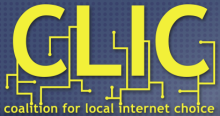Joanne Hovis Testifies In DC; Keep Local Efforts In The Game
On January 30th, the House Energy and Commerce Communications and Technology Subcommittee held a hearing to learn from experts about how to shrink the digital divide and expand Internet access. The committee invited Joanne Hovis, owner of CTC Technology and Energy, to testify.
Make Investment Attractive
Hovis also heads up the Coalition for Local Internet Choice (CLIC) as CEO. She shared a plan that focused on creating an environment that will encourage infrastructure investment by the private and public sectors. The CLIC website shared the six main components of the plan:
Support public-private partnerships that ease the economic challenges of constructing rural and urban infrastructure;
Incent local efforts to build infrastructure — ones that private service providers can use — by making bonding and other financing strategies more feasible;
Target meaningful infrastructure capital support to rural and urban broadband deserts, not only to attract private capital but also to stimulate private efforts to gain or retain competitive advantage;
Empower local governments to pursue broadband solutions of all types, including use of public assets to attract and shape private investment patterns, so as to leverage taxpayer-funded property and create competitive dynamics that attract incumbent investment;
Require all entities that benefit from public subsidy to make enforceable commitments to build in areas that are historically unserved or underserved; and
Maximize the benefits of competition by requiring that all federal subsidy programs are offered on a competitive and neutral basis for bid by any qualified entity.
Hovis began her testimony by assessing our current approaches to shrinking the digital divide. She examined current belief in D.C. that local processes such as permitting and access hold up infrastructure investment and frankly told them that such a belief is incorrect.
From Hovis’s written testimony:


